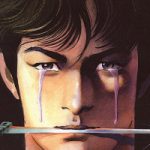Comic Cuts
Regions: UK

Comic Cuts was one of the first successful weekly comic books in Britain. It was first released in 1890 by the publisher, Alfred Harmsworth (1865-1922), and ran for 63 years until its cancellation in 1953 when it was absorbed into Knockout. The success of Comic Cuts is partially attributed to its low price. The issues initially sold for only a halfpenny each, becoming one of the cheapest comic books at the time. The low price set by Harmsworth was an impressive marketing decision, and Comic Cuts sold at a fast rate, prompting Harmsworth to publish another weekly comic: Illustrated Chips. The comics featured in Comic Cuts targeted an older audience and sometimes covered social issues or politics. Because of the mature material, Harmsworth insisted that Comic Cuts be referred to as an “illustrated paper.” In 1901 Alfred Harmsworth created the publishing company Amalgamated Press and began publishing Comic Cuts under his new company’s name.
Comic Cuts was originally published with the promise of “Pictures, Prizes, and Jokes,” and included short jokes and contests in addition to the comics.The debut issue was eight pages with more than twenty separate comics spread over four pages. Half of the issue was text which included a letter from the editor, various stories, advertisements, and giveaways. Though the format of Comic Cuts changed overtime, the first issues were black and white with many comics displayed on a single page, completely separate from the text stories. Different comic stories were separated by frames (and often did not include frames within the comics themselves). In addition to comics, illustrated stories would also be included in the issue. Rather than utilizing speech bubbles, early issues relayed dialogue in numbered captions under or above the frames. This style of narration outside the comic was continued even with the introduction of speech bubbles, and enabled writers to include more text without covering up the art. The format eventually changed over time with the comic incorporating a more “modern” style of art and the addition of color comics in 1896.
While the first issues of Comic Cuts did not include any new art (and instead reprinted existing American comics), the paper eventually began to advertise for artists to produce new content. During its extensive run, Comic Cuts employed notable artists such as Bertie Brown, Cyril Price, Roland Hill, Jack B. Yeats, Oliver Veal, and Tom Browne. The style, cost, and addition of original content eventually placed Comic Cuts in a position to merge with other comic books: Golden Penny, Jolly Comic, and Larks. While Comic Cuts no longer exists, it is considered to be a major influence on the modern-day comic book.
— Michael Baker
Further Reading
- Khoury, George, David Roach, Jon B. Cooke, and Eric N. Weathingon. True Brit: Celebrating the Comic Book Artists of England. Raleigh: TwoMorrows Publishing, 2004.
- Pemberton, Sir Max. Lord Northcliffe, a Memoir. Reprint, Whitefish: Kessinger LLC Publishing, 1922.


